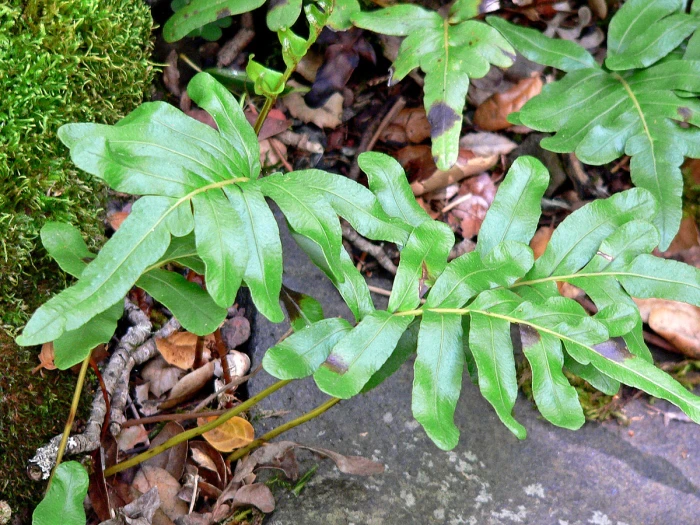Leathery Polypody
(Polypodium scouleri)
Leathery Polypody (Polypodium scouleri)
/
/

Stan Shebs
CC BY-SA 3.0
Image By:
Stan Shebs
Recorded By:
Copyright:
CC BY-SA 3.0
Copyright Notice:
Photo by: Stan Shebs | License Type: CC BY-SA 3.0 | License URL: https://creativecommons.org/licenses/by-sa/3.0 | Uploader: Stan Shebs | Publisher: Wikimedia Commons | Title: Polypodium_scouleri_2.jpg | Notes: User created page with UploadWizard |


















































Estimated Native Range
Climate Requirements
| • Precipitation | 5" - 154" |
| • High Temp. | 60°F - 95°F |
| • Low Temp. | -7°F - 94°F |
Summary
Polypodium scouleri, commonly known as Leathery Polypody, Scouler’s Polypody, Coast Polypody, or Leather-Leaf Fern, is an evergreen fern native to the coastal fog belt of western North America, from British Columbia to Guadalupe Island off Baja California. It thrives in the understory of coastal coniferous forests, often on rocky outcrops and cliffs, as well as in the sheltered nooks of beach dunes. This fern is well-adapted to its native habitat, where it benefits from the high humidity and moisture provided by heavy fogs and sea spray.
Leathery Polypody has a distinctive appearance with its leathery, dark green fronds that can reach up to 50 cm long. The fronds are pinnatifid with a tough texture, contributing to its common name. It does not produce notable flowers or seeds, as it reproduces via spores. This fern is valued in cultivation for its hardiness and its ability to thrive in coastal gardens where other plants may struggle with salt spray and wind. It is used for ground cover, in rock gardens, and as an accent in shaded areas. Leathery Polypody requires minimal maintenance, making it an attractive choice for gardeners. It prefers part shade but can tolerate full sun in cooler, coastal climates. While it can handle medium to high water conditions, it is also somewhat drought-tolerant once established. It is important to plant it in well-draining soil to prevent root rot.CC BY-SA 4.0
Leathery Polypody has a distinctive appearance with its leathery, dark green fronds that can reach up to 50 cm long. The fronds are pinnatifid with a tough texture, contributing to its common name. It does not produce notable flowers or seeds, as it reproduces via spores. This fern is valued in cultivation for its hardiness and its ability to thrive in coastal gardens where other plants may struggle with salt spray and wind. It is used for ground cover, in rock gardens, and as an accent in shaded areas. Leathery Polypody requires minimal maintenance, making it an attractive choice for gardeners. It prefers part shade but can tolerate full sun in cooler, coastal climates. While it can handle medium to high water conditions, it is also somewhat drought-tolerant once established. It is important to plant it in well-draining soil to prevent root rot.CC BY-SA 4.0
Plant Description
- Plant Type: Fern
- Height: 0.5-1 feet
- Width: 1-3 feet
- Growth Rate: Moderate
- Flower Color: N/A
- Flowering Season: Non-Flowering
- Leaf Retention: Evergreen
Growth Requirements
- Sun: Full Sun, Part Shade
- Water: Medium, High
- Drainage: Medium
Common Uses
Bank Stabilization, Bird Garden, Deer Resistant, Groundcover, Low Maintenance, Rabbit Resistant, Salt Tolerant
Natural Habitat
Coastal coniferous forests, often on rocky outcrops and cliffs, as well as in the sheltered nooks of beach dunes
Other Names
Common Names: Scouler’s Polypody, Coast Polypody, Leather-Leaf Fern, Leather-Leaved Polypody, Polypode De Scouler
Scientific Names: Polypodium scouleri, Polypodium pachyphyllum, Goniophlebium pachyphyllum, Goniophlebium scouleri, Polypodium carnosum, Polypodium vulgare var. scouleri
GBIF Accepted Name: Polypodium scouleri Hook. & Grev.